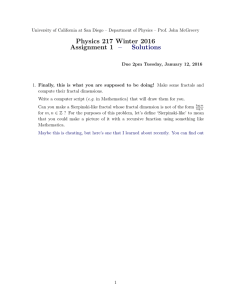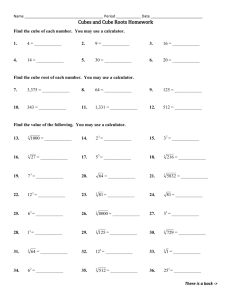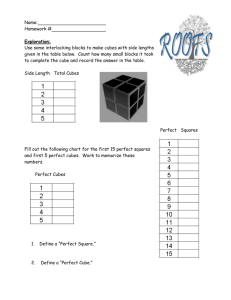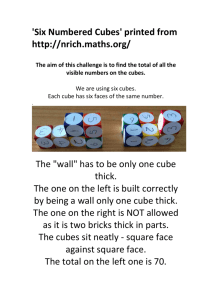Physics 217 Winter 2016 Assignment 1
advertisement
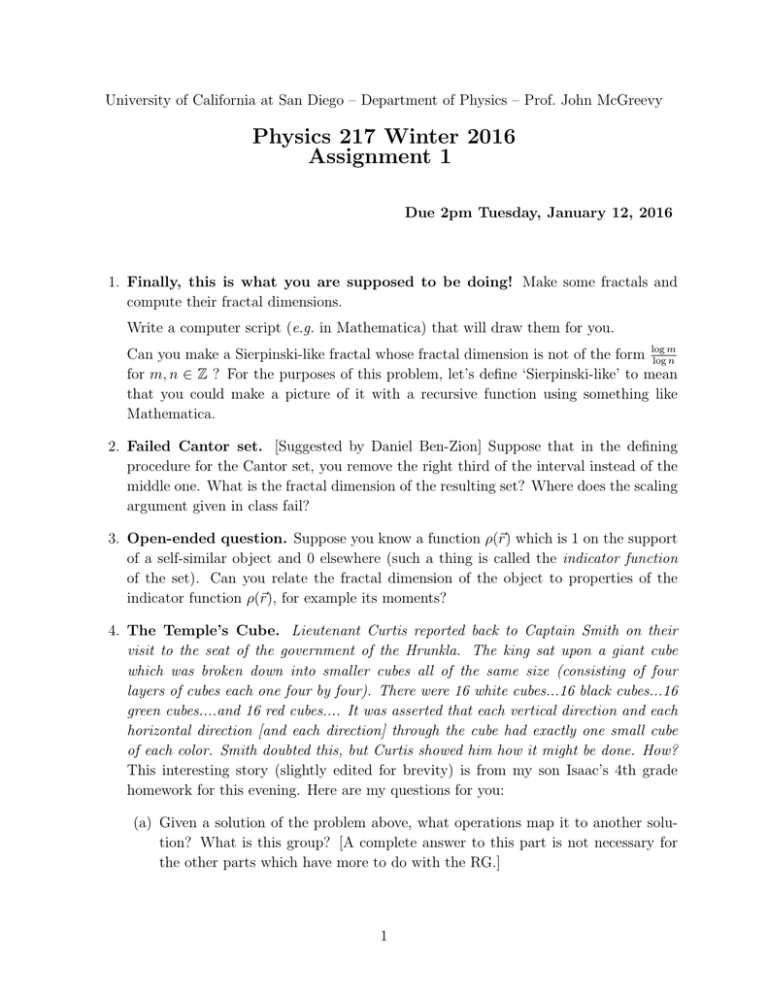
University of California at San Diego – Department of Physics – Prof. John McGreevy Physics 217 Winter 2016 Assignment 1 Due 2pm Tuesday, January 12, 2016 1. Finally, this is what you are supposed to be doing! Make some fractals and compute their fractal dimensions. Write a computer script (e.g. in Mathematica) that will draw them for you. m Can you make a Sierpinski-like fractal whose fractal dimension is not of the form log log n for m, n ∈ Z ? For the purposes of this problem, let’s define ‘Sierpinski-like’ to mean that you could make a picture of it with a recursive function using something like Mathematica. 2. Failed Cantor set. [Suggested by Daniel Ben-Zion] Suppose that in the defining procedure for the Cantor set, you remove the right third of the interval instead of the middle one. What is the fractal dimension of the resulting set? Where does the scaling argument given in class fail? 3. Open-ended question. Suppose you know a function ρ(~r) which is 1 on the support of a self-similar object and 0 elsewhere (such a thing is called the indicator function of the set). Can you relate the fractal dimension of the object to properties of the indicator function ρ(~r), for example its moments? 4. The Temple’s Cube. Lieutenant Curtis reported back to Captain Smith on their visit to the seat of the government of the Hrunkla. The king sat upon a giant cube which was broken down into smaller cubes all of the same size (consisting of four layers of cubes each one four by four). There were 16 white cubes...16 black cubes...16 green cubes....and 16 red cubes.... It was asserted that each vertical direction and each horizontal direction [and each direction] through the cube had exactly one small cube of each color. Smith doubted this, but Curtis showed him how it might be done. How? This interesting story (slightly edited for brevity) is from my son Isaac’s 4th grade homework for this evening. Here are my questions for you: (a) Given a solution of the problem above, what operations map it to another solution? What is this group? [A complete answer to this part is not necessary for the other parts which have more to do with the RG.] 1 (b) Do problem (c) first. Find a condition on the solution with only 4 colors which picks out the n = 2 case of the self-similar solution from the many possible solutions. n 3 (c) Suppose instead that there are 2n colors, and (22n) = 22n blocks of each color. Find a self-similar solution of this generalization of the problem, that is, a giant 2n × 2n × 2n cube with one block of each color in every row, column and whatever the third thing is called. It may help to use a solution for one value of n to construct a solution for next larger value where those cubes are subdivided. You can ignore the remaining parts if you prefer. (d) Tell me about other generalizations of this problem. The version with squares instead of cubes is a good warmup. (e) [super-bonus part] Find a set of energetic constraints on the configurations of the cubes (e.g. assign numbers to the colors) which favors the configurations described above. (f) [super2 -bonus part] Find a quantum many-body physics application of these insights involving the Pauli principle. 2

